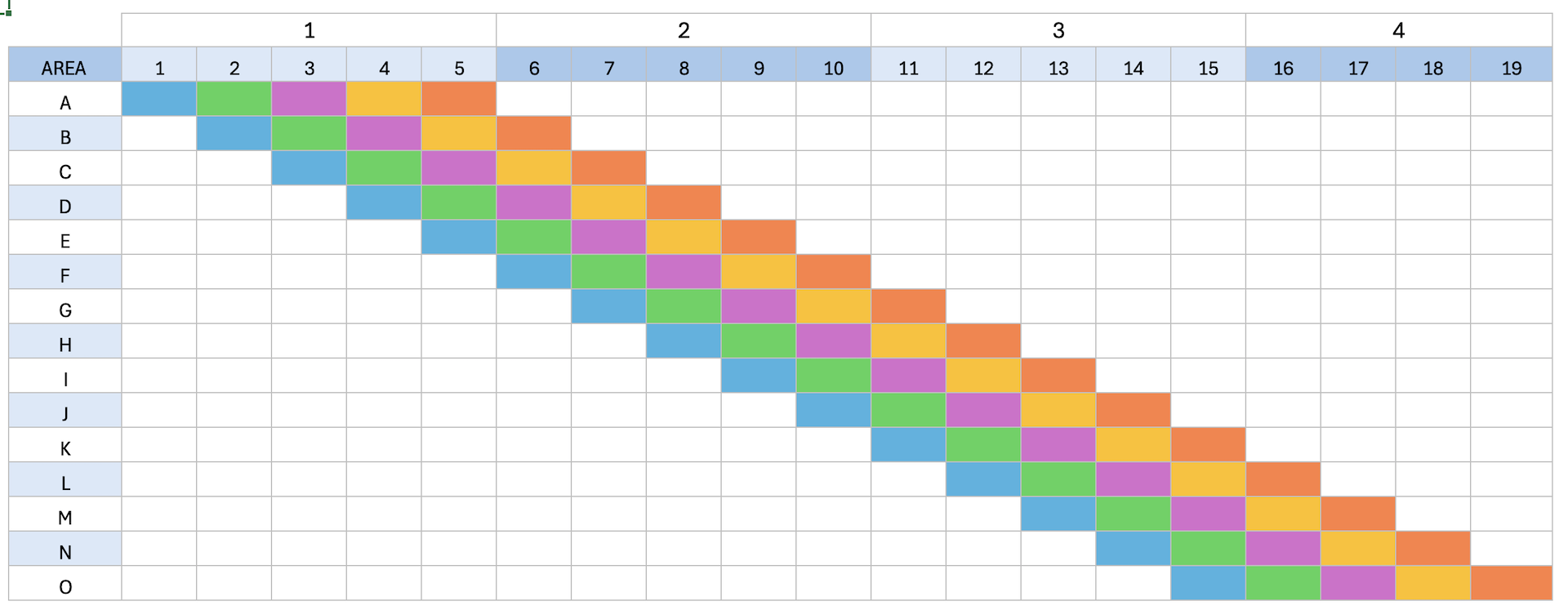I recently discussed construction scheduling software for Takt production with the CIO of a general contractor. Construction planning is one of the areas where many relatively new apps are available. Still, none of the latest alternatives has made an apparent breakthrough in Takt.
The Rise of Takt Planning
Takt is a lean construction method that is gaining traction in many countries. It offers a structured approach to managing workflow and aligning activities across different teams. The method’s popularity is growing, as it promises to reduce waste, enhance productivity, and deliver projects faster. Despite these advantages, traditional scheduling software doesn’t typically support this specific need.
Many small development companies have introduced tools specifically designed for Takt planning to bridge this gap. These tools are tailored to map out the flow of work, ensuring that each task is completed in sequence and that the workforce is utilized efficiently. However, despite the specialized design of these tools, many construction companies still struggle to implement them effectively.
A recurring issue is the failure of Takt planning tools to gain long-term traction within organizations. There are cases where, on one construction site, a management team has implemented a new planning tool but doesn’t keep using it in the next project. This inconsistency raises important questions: Why do these tools fail to take root, even though they seem to offer clear benefits?
It would be interesting to understand why that happens. Is it because the software did not provide enough value, or it was too cumbersome? Or is it because the software was not used systematically throughout the project so that it would yield its full benefits?
Another possibility is that teams revert to familiar tools and processes, finding comfort in what they know works—even if it’s less efficient.
Despite the availability of specialized Takt planning software, many contractors and consultants still use Excel for Takt planning. That’s probably because it is familiar and because it is fast, allowing for visually satisfactory results. Excel’s flexibility allows teams to quickly set up schedules, create visual plans, and adjust on the fly, which is critical in the fast-paced construction environment.
The problem is that Excel sheets are not collaborative tools, and any intelligence you build into them can be challenging for another user to master besides the author. Changing the original plan can also be tricky. The lack of real-time collaboration features and difficulty scaling or transferring complex spreadsheets between projects often lead to inefficiencies and errors.
I have experience creating even commercial Excel apps for management purposes, but I would not recommend using it as a long-term company-wide solution. Excel tools are often more like a hack than a reliable basis for building your business processes. In the long run, relying on Excel can lead to fragmented workflows and siloed information, which contradicts the very principles of lean construction and Takt planning.

Simplicity is Hard to Achieve
Lean construction emphasizes collaborative planning, and scheduling tools should support that philosophy. A significant problem with many new tools is the steep learning curve. If it takes too much time and effort to learn how to use a completely new tool with a different use logic, only a handful of individuals start using it. The usage doesn’t scale. This barrier is particularly problematic in construction, where time is money, and teams often juggle multiple priorities simultaneously.
If new scheduling tools want to become practical and widely adopted, they should compete on simplicity, mobility, and connectivity. Each seems to be a tough nut to crack in software development. That’s not because of software tech; it’s more about understanding business problems, psychology, and human behavior. Users need tools that integrate seamlessly into their existing workflows and offer tangible benefits without requiring extensive training.
We still have software designed from the developer’s perspective, not the user’s. Developers might focus on adding advanced features and capabilities without considering how users interact with the software daily. This disconnect between design and usability is one of the reasons why many Takt planning tools fail to gain widespread adoption.
Getting Things Done Easier with the Help of AI
AI-powered systems will eventually solve many of today’s challenges with planning software. They will help optimize schedules and resources and make the interaction with these systems intuitive. AI can analyze vast amounts of data, predict potential issues, and suggest solutions, making planning more dynamic and responsive to real-time changes on the construction site.
Mastering apps for various tasks will become less critical as the focus shifts to getting things done with systems utilizing AI technology. These systems can interact with various apps and data sources and provide an intuitive user experience. We’re already seeing the first steps taken in that direction, with AI-driven tools beginning to emerge in construction tech.
The true value of scheduling software lies not in whether it uses AI but in its ability to facilitate communication and accelerate the implementation of Takt throughout the project. A great app empowers users by simplifying processes, ensuring smooth coordination, and driving efficiency at every stage. As AI continues to evolve, we can expect these tools to become even more powerful, reducing the burden on human planners and enabling more effective and efficient construction projects.
The Path Forward
For Takt planning software to truly take off, it must address the practical needs of its users. This includes offering robust features and ensuring that the software is easy to learn, intuitive to use, and capable of integrating with existing tools and processes. Developers must place a greater emphasis on user experience, collaboration, and flexibility.
The demand for effective planning tools will only grow as the construction industry evolves. Those who can crack the code of simplicity, mobility, and connectivity will likely lead the way in the next generation of construction management software. Until then, Excel may remain the go-to tool for many, but the industry is clearly ripe for innovation.
View the original article and our Inspiration here


Leave a Reply